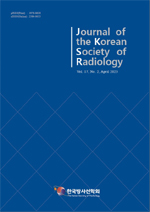
국내 방사선종사자 피폭 분류체계 개선에 관한 연구
Study on the Improvement of the Radiation Work Field Classification System in Republic of Korea
- 한국방사선학회
- 한국방사선학회 논문지
- 제17권 제2호
- : KCI등재
- 2023.04
- 267 - 275 (9 pages)
전 세계적으로 방사선종사자들의 피폭 기록은 관심의 대상이며 피폭이 일어나는 분야에 대한 분석이 수행되고 있다. 한국에서는 유관부처에 따라 보건복지부, 농림축산식품부, 원자력안전위원회에서 종사자들의 피폭을 11개 업종으로 나누어 기록을 수집 분석하고 있다. 그러나 이러한 분류 체계는 유엔방사선영향과학위원회를 비롯한 주요 국가들의 분류 체계와는 정합성이 부족하다. 국내의 종사자 피폭 분류 체계는 명확한 분류 기준이 없고 업종 특성 등을 반영해주지 못하고 있다. 유엔방사선영향과학위원회의 분류 체계를 바탕으로 국내의 분류 체계를 핵주기 분야, 의료분야, 산업분야, 그 외 분야(교육/연구, 군사/공공)의 5개 대분류 체계와 그에 따른 세 분류 및 직군 분류를 본 연구를 통해 제안하였다.
Occupational exposure records are subject of global interest, and analysis of radiation workers in work categories is being conducted. In Rep. of Korea, according to relevant ministries, the MOHW(Ministry of Health and Welfare), the MAFRA(Ministry of Agriculture, Food and Rural Affairs), and the NSSC(Nuclear Safety and Security Commission) collect and analyze records of occupational exposure by dividing them into 11 work categories. However, this classification system lacks consistency with the systems of major countries, including the UNSCEAR(United Nations Scientific Committee on the Effects of Atomic Radiation). The domestic radiation work field classification system does not have clear classification criteria and does not reflect the characteristics of the radiation work field. Through the analysis of the classification system of the UNSCEAR, we suggested the five main categories(nuclear cycle, medical, industrial, others(education/research, military/public) field and several sub-categories according to each radiation work field.
Ⅰ. INTRODUCTION
Ⅱ. MATERIAL AND METHODS
Ⅲ. RESULT
Ⅳ. DISCUSSION
Ⅴ. CONCLUSION
Acknowledgement
Reference